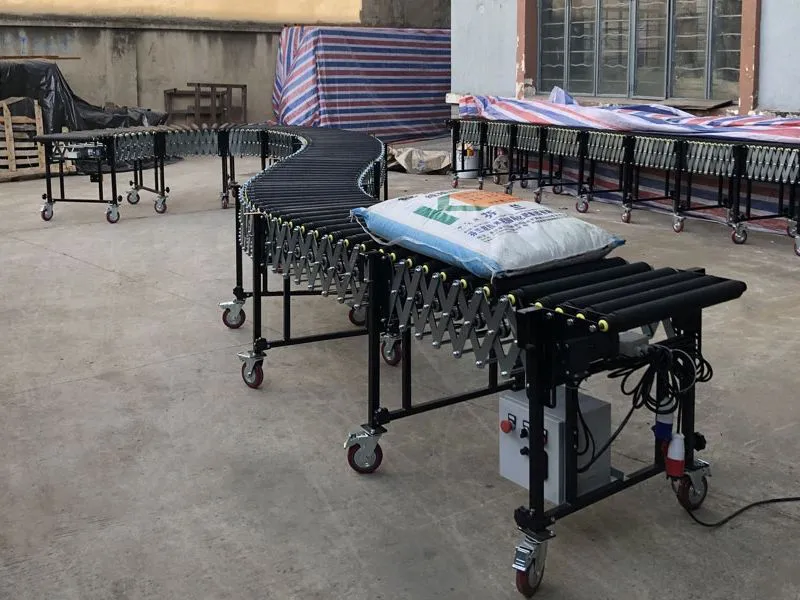
How Will We Design a Flexible Roller Conveyor?
Designing a flexible roller conveyor involves a systematic approach to meet your specific material handling requirements. Below are the steps we can take to design a flexible roller conveyor tailored to your needs.
- Understand Material Handling Requirements:
Clearly define the types of products or materials you will be transporting. Consider the dimensions, weights, and any special characteristics of the items being handled. - Determine Application and Usage:
Identify the specific application and usage scenario for the flexible roller conveyor. This includes understanding whether the conveyor will be used for loading/unloading trucks, assembly lines, or other material handling processes. - Layout and Configuration:
Assess the layout of your facility and determine the configuration of the conveyor system. Consider entry and exit points, workstations, and any constraints in the workspace. - Expandable Features:
Decide if you need expandable feature for the conveyor. This allows the conveyor to extend or retract, providing flexibility in adapting to different lengths and tasks. - Adjustable Height:
Determine whether an adjustable height feature is necessary. This is particularly important for accommodating different loading or unloading points and aligning with other equipment. - Material Selection:
Choose appropriate materials for the conveyor frame and rollers. The frame is typically made of steel or aluminum for durability, and the rollers can be made of metal or plastic. Ensure the materials meet the load-bearing requirements. - Roller Spacing and Configuration:
Determine the spacing and configuration of the rollers. This includes choosing between straight rollers or those with a curve or spiral pattern, depending on the type of products being handled. - Drive Mechanism:
Decide on the drive mechanism for the conveyor. It can be gravity-driven for a simple, cost-effective solution or powered with motors for controlled movement. - Portability and Mobility:
Consider whether portability is a key factor. If so, incorporate features such as casters or wheels to make the conveyor easily movable within the facility. - Safety Features:
Integrate safety features such as guards, emergency stop buttons, and sensors to enhance workplace safety. - Ease of Maintenance:
Design the conveyor with ease of maintenance in mind. Consider features such as easily replaceable rollers and a design that minimizes debris accumulation. - Customization Options:
Explore customization options based on your unique requirements. This may include variations in width, length, or other features. - Testing and Prototyping:
Build a prototype or conduct testing to ensure that the design meets your performance expectations. This can help identify any necessary adjustments or improvements before mass production. - Documentation and User Manual:
Prepare comprehensive documentation and a user manual that provides clear instructions on assembly, operation, and maintenance of the flexible roller conveyor. - Compliance with Standards:
Ensure that the design and construction comply with relevant safety and industry standards to guarantee the reliability and safety of the conveyor.
Collaborating with experienced engineering professionals or conveyor manufacturers during the design process is recommended to ensure that the final product aligns with your specifications and industry standards. Regular communication and feedback loops are essential for refining the conveyor design to best suit your material handling needs.


Leave Me Your Requirement!